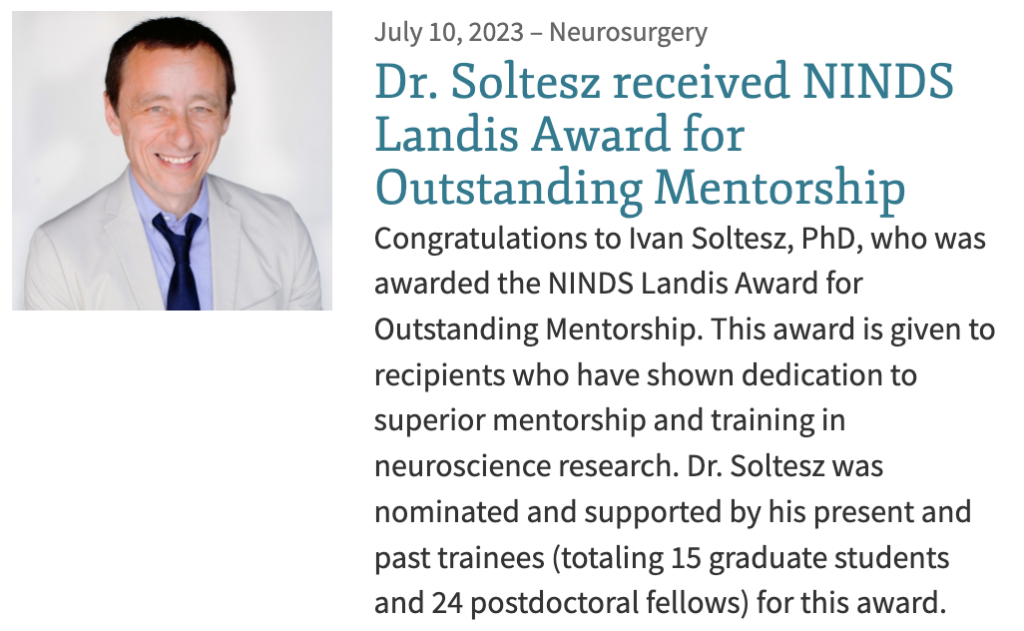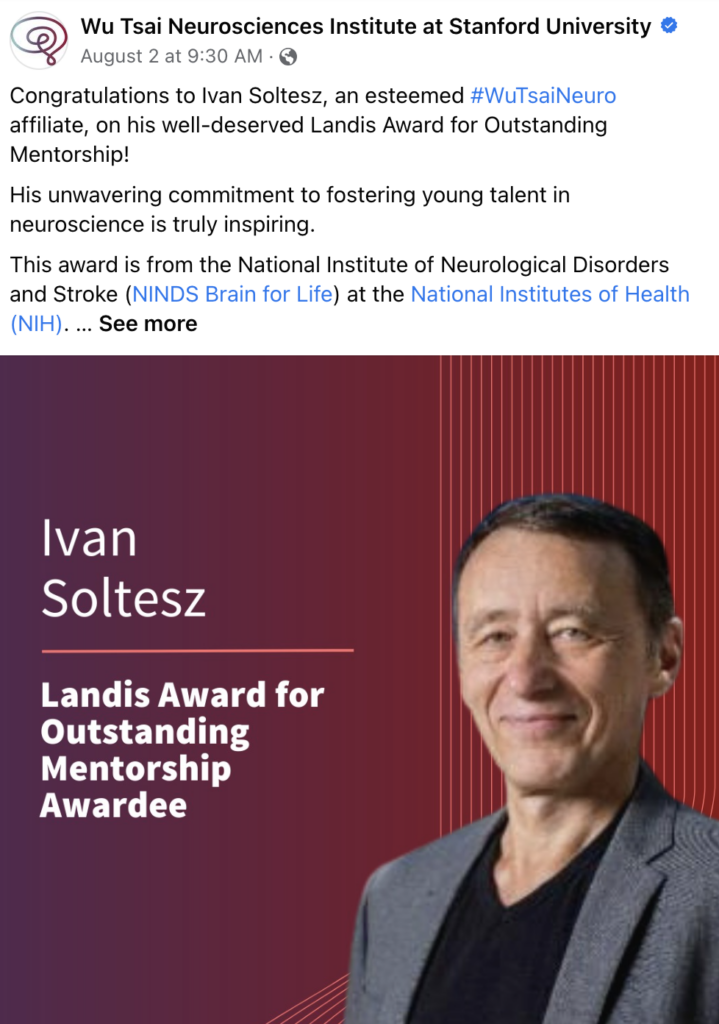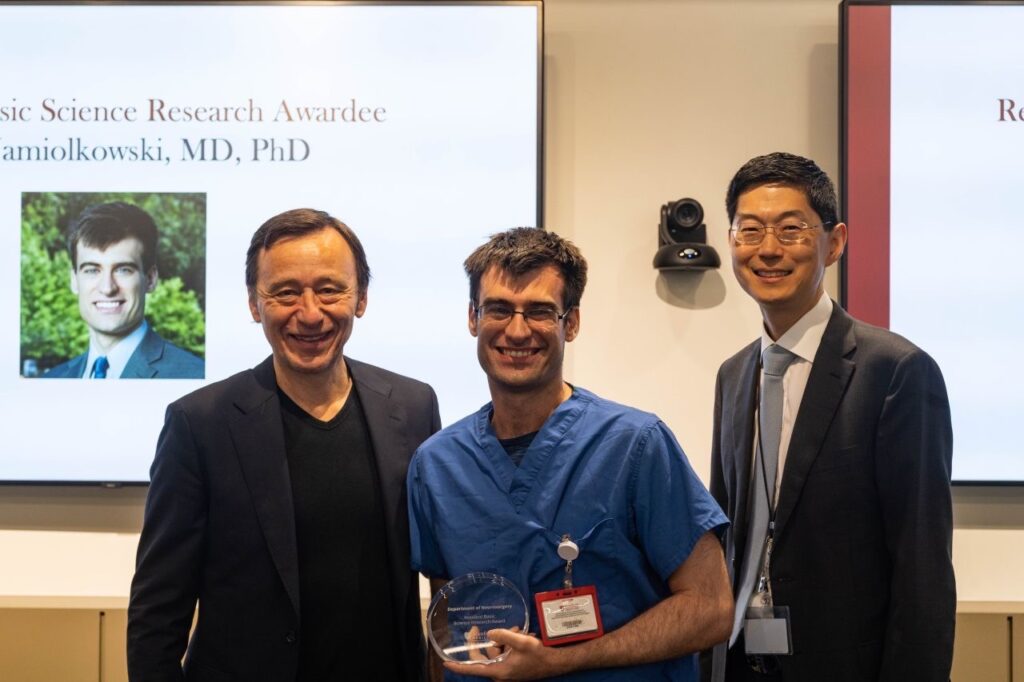By: solteszlab
January 1, 2024
Congratulations Assistant Professor Quynh Anh!
In 2024, Quynh Ann became a faculty member and started her own lab in the department of Pharmacology and Vanderbilt Brain Institute, Vanderbilt University, Nashville. QA’s lab aims to bridge our understanding of neural function and dysfunction at the level of molecules, cells, circuits, and behavior. A central focus of the lab is to understand mechanisms of hyperexcitability in the brain. Aberrant firing of neurons underlies many neurological disorders such as epilepsy and a greater understanding of how this dysfunction arises can pave the way for the identification of novel targets for therapeutic intervention. We utilize techniques such as slice electrophysiology, in vivo silicon probe recording, 2-photon imaging, closed-loop optogenetics, EEG recording, and computational modeling in mice for our investigations. The lab has an interdisciplinary group of collaborators, including biochemists and bioengineers who develop tools to aid our basic science investigations as well as clinicians who help translate our basic insights from mouse to humans.
Another Soltesz Lab reunion at AES in the books.

July 10, 2023
Congratulations, Ivan!
Congratulations to Ivan on being selected for the Landis Award for Outstanding Mentorship.
This annual award is from the National Institute of Neurological Disorders and Stroke (NINDS) at the National Institutes of Health (NIH). The NINDS established this award to emphasize mentorship and encourage faculty to make mentorship a vital component of their career. An incredible achievement and honor!


May 23, 2023
Congratulations, Ryan!

Last week, Stanford Neurosurgery held its first annual Neurosurgery Department Awards. Awards were given to both residents and med students who have shown exemplary work and research in their areas of interest. Ryan Jamiolkowski, who is performing research in our lab, was one of the awardees. Congratulations!
February 7, 2023
Balazs – Welcome to Soltesz Lab!
We are thrilled to welcome Balazs in his new role as a Research Assistant in our lab. With two decades of experience in neuroscience, pharmacological research, and development, Balazs is a highly skilled behavioral pharmacologist.
January 1, 2023
Congratulations, Assistant Professor Barna!
In 2023, Dr. Barna Dudok moved to Baylor College of Medicine, Houston, Texas, where he started his new job as McNair Scholar and Assistant Professor at the Department of Neurology. His research is focused on better understanding how GABAergic inhibitory interneurons shape circuit dynamics in healthy brains and in epilepsy. His goal is to identify optimal targets for neuromodulatory intervention and develop cell type-specific strategies for inhibiting epilepsy.
September 1, 2022
Charlotte – Welcome to Soltesz Lab!
Charlotte has been with Stanford since 2021 and joined the Soltesz Lab just recently in September. She is holding a BSc degree in Physiology and Neuroscience from University of California, San Diego. Charlotte is excited about her new role as a Research Assistant in our lab and is currently being mentored by Peter Klein.
Jordan S. Farrell received a K99/R00 Career Development Award, entitled “Dissecting hypothalamic pathways for seizure control”.
December 17, 2021
Supramammillary regulation of locomotion and hippocampal activity.
Locomotor speed is a basic input used to calculate one’s position, but where this signal comes from is unclear. We identified neurons in the supramammillary nucleus (SuM) of the rodent hypothalamus that were highly correlated with future locomotor speed and reliably drove locomotion when activated. Robust locomotion control was specifically identified in Tac1 (substance P)–expressing (SuMTac1+) neurons, the activation of which selectively controlled the activity of speed-modulated hippocampal neurons. By contrast, Tac1-deficient (SuMTac1−) cells weakly regulated locomotion but potently controlled the spike timing of hippocampal neurons and were sufficient to entrain local network oscillations. These findings emphasize that the SuM not only regulates basic locomotor activity but also selectively shapes hippocampal neural activity in a manner that may support spatial navigation.
The axon initial segment of hippocampal pyramidal cells is a key subcellular compartment for action potential generation, under GABAergic control by the “chandelier” or axo-axonic cells (AACs). Although AACs are the only cellular source of GABA targeting the initial segment, their in vivo activity patterns and influence over pyramidal cell dynamics are not well understood. We achieved cell-type-specific genetic access to AACs in mice and show that AACs in the hippocampal area CA1 are synchronously activated by episodes of locomotion or whisking during rest. Bidirectional intervention experiments in head-restrained mice performing a random foraging task revealed that AACs inhibit CA1 pyramidal cells, indicating that the effect of GABA on the initial segments in the hippocampus is inhibitory in vivo. Finally, optogenetic inhibition of AACs at specific track locations induced remapping of pyramidal cell place fields. These results demonstrate brain-state-specific dynamics of a critical inhibitory controller of cortical circuits.